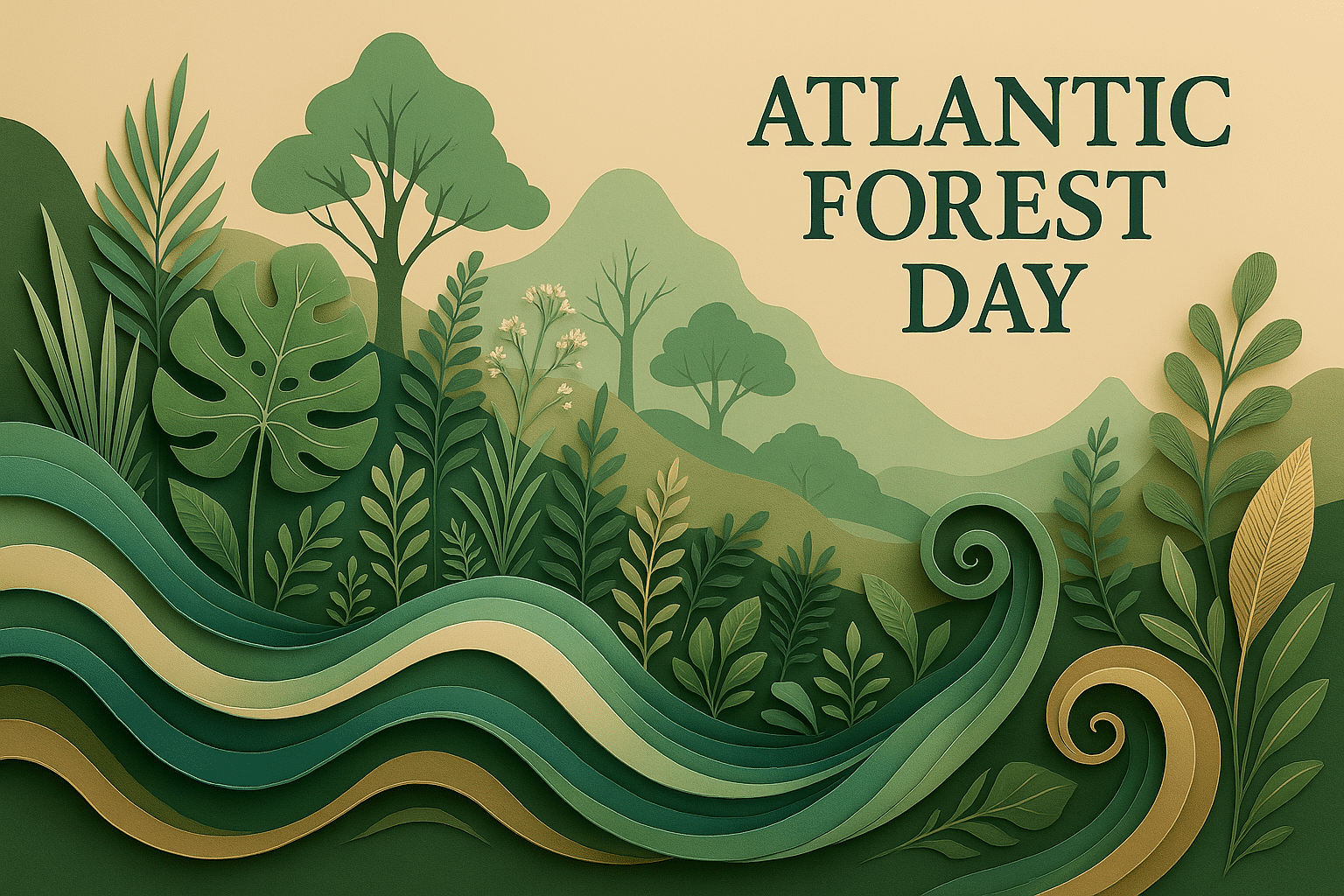What is International Atlantic Forest Day?
International Atlantic Forest Day is observed every year on May 27. This day highlights the importance of the Atlantic Forest, one of the world’s richest yet most endangered ecosystems. It promotes awareness, protection, and reforestation across national borders.
The Atlantic Forest stretches through Brazil, Paraguay, and Argentina. Despite massive deforestation, it still supports over 20,000 plant species and thousands of animals, many of which exist nowhere else. This day calls on governments, communities, and individuals to protect what’s left and restore what’s been lost.
History and Origin
International Atlantic Forest Day was first recognised in Brazil in 1999 and has since grown into a global moment for forest awareness. The chosen date, May 27, honours the 1560 writings of Father José de Anchieta, who documented the rich biodiversity of the Atlantic Forest in early colonial records.
His detailed descriptions revealed the vast ecological value of the region, even in the sixteenth century. Since then, May 27 has become a powerful reminder of the forest’s deep cultural and scientific importance.
Who Participates in International Atlantic Forest Day?
- Environmental NGOs: Lead campaigns, reforestation projects, and advocacy work.
- Educators and researchers: Share knowledge about biodiversity and sustainable land use.
- Governments: Launch new protection initiatives and support forest-friendly policies.
- Local communities: Take part in forest restoration and protect native species.
- Global citizens: Support conservation efforts through donations, volunteering, or sharing information.
Slogans and Themes
Slogans include “Protect Our Forests,” “Restore the Green,” and “Nature is Our Future.” Themes revolve around environmental justice, biodiversity, climate resilience, and the right to a healthy environment. The message is simple: forests matter, and the Atlantic Forest must be saved.
Colors symbols and patterns
Colors
- Green: Stands for growth, renewal, and the forest’s life-giving role.
- Brown: Symbolises soil, roots, and grounded ecosystems.
- Blue: Represents rivers and rainfall, much of which depends on healthy forests.
Symbols
- Tree icon: A universal symbol for reforestation and environmental care.
- Animal silhouettes: Represent unique species like the golden lion tamarin and jaguar.
- Water droplets: Highlight the Atlantic Forest’s role in freshwater supplies.
Patterns
- Leaf prints: Reflect the lush and layered vegetation of the forest.
- Animal tracks: Symbolise wild biodiversity and forest mobility.
- Rain lines: Show the forest’s role in cooling, rainfall, and climate balance.
Most Used Hashtags
- #InternationalAtlanticForestDay
- #AtlanticForest
- #MataAtlantica
- #Reforestation
- #ProtectNature
How to Celebrate International Atlantic Forest Day:
- Plant native trees: Support reforestation by joining or funding local planting efforts.
- Host an event: Organise a workshop, school activity, or community walk in nature.
- Learn something new: Read about the forest’s wildlife, climate value, and threats.
- Share the message: Use social media or local press to raise awareness.
- Support forest defenders: Donate to NGOs or grassroots groups protecting the forest on the ground.
Why is International Atlantic Forest Day Important?
The Atlantic Forest is one of the world’s most threatened tropical forests. Only a fraction of it remains, yet it plays a crucial role in regulating climate, preserving biodiversity, and supplying clean water to millions of people.
International Atlantic Forest Day reminds us that protection and restoration are still possible. By working together across countries, we can revive this precious forest, secure its future, and preserve one of Earth’s greatest natural treasures.
Features
May 27: Atlantic Forest Day
Why do you keep falling for the same type?
Read the article Lovemaps: the hidden blueprint of our love.

